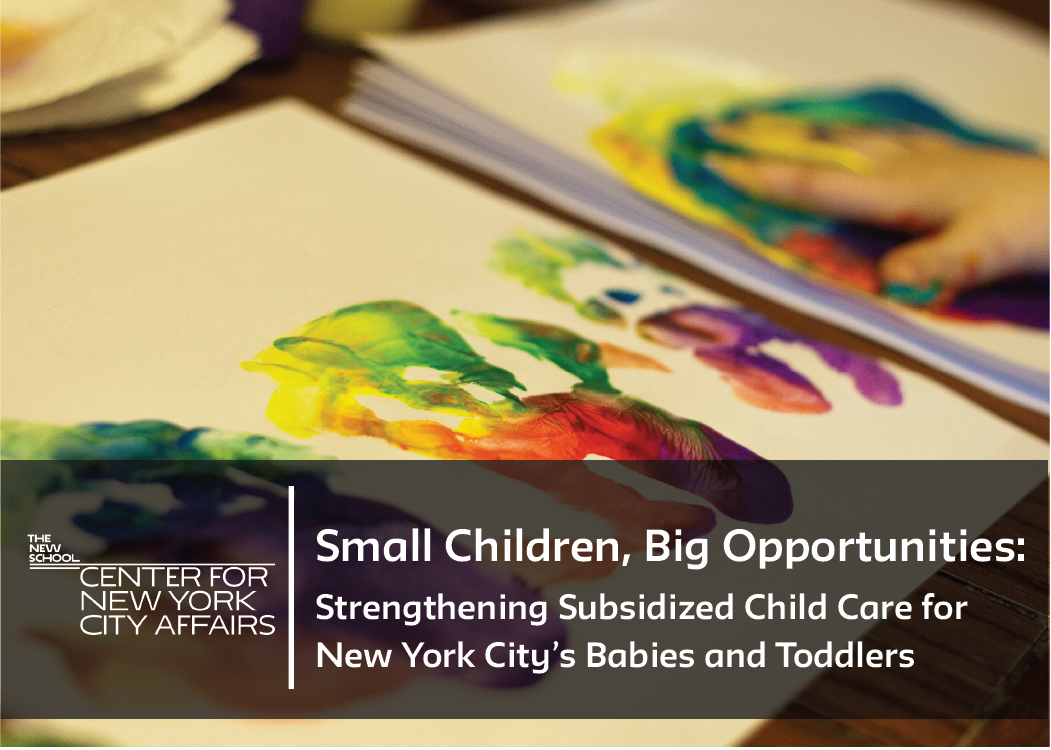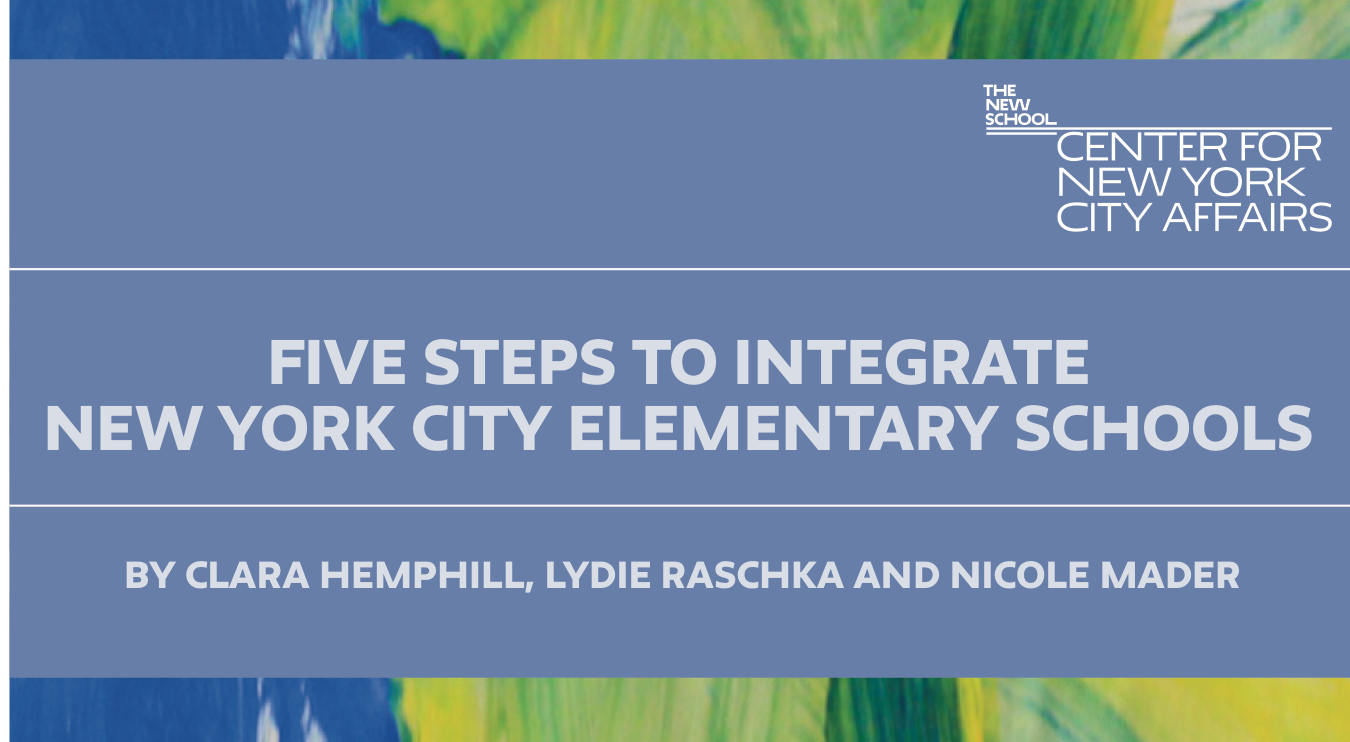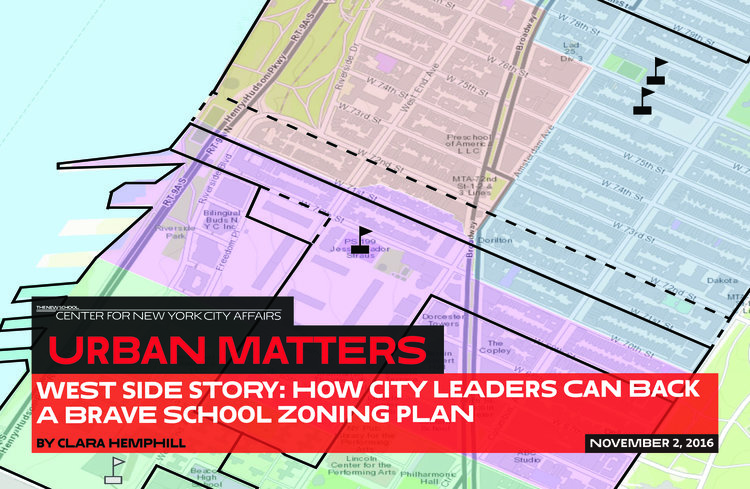Our approach to education combines practical information for parents and cutting-edge policy research. Our Insideschools website provides definitive information to more than 1.8 million parents and educators each year. Recent research projects include a look at opportunities to support integrated schools in changing communities, an in-depth study of chronic absenteeism, a toolkit on implementing community schools, and several reports on gaps in math and science instruction.
Scrapping the SHSAT: Breaking Down Who Would Be Affected, And How
By Nicole Mader, Melanie Quiroz, and Carmen Cheung
Mayor Bill de Blasio’s proposal to end use of the Specialized High School Admissions Test (SHSAT) would make the city’s most elite public high schools more racially and ethnically diverse. The mayor’s plan would instead offer seats at the specialized high schools to the top performers in each of the city’s public middle schools. We tested this proposal and found that, if enacted, it would give some 2,000 academically qualified Black and Latinx students each year access to higher-performing schools and a more ethnically diverse cohort of fellow students than they typically have through the current school choice process.
‘The Big Problem Now Is the Gross Inequalities in the School System’:
Part Two of Urban Matters’ A Q&A with InsideSchools founder Clara Hemphill.
Urban Matters: Last week, we talked about the school-by-school reporting you oversee at InsideSchools. You also direct education policy at the Center for New York City Affairs at The New School. Did that role grow naturally out of what you do with InsideSchools?
‘Our Readers Feel We Are on Their Side’
A Q&A with InsideSchools founder Clara Hemphill.
Clara Hemphill, who directs the InsideSchools project at the Center for New York City Affairs at The New School and is the Center’s director of education policy, passes those batons this summer. This week and next, Urban Matters picks her brain about both roles, and about reporting on the nation’s largest school system.
The Path to Salary Parity in Early Childhood Education
By Mai Miksic
Decades of research have demonstrated the importance of early education, especially for children from economically and historically disadvantaged backgrounds. Researchers have also cautioned that the financial returns on investments in early childhood are contingent on the quality of programming. High-quality early childhood education programs require high-quality teachers. By July this year, EarlyLearn, the City’s subsidized early childhood education program, will be merged with Pre-K for All under the City Department of Education, creating a birth-to-high-school continuum of education that includes a truly unified early childhood system. That system should include pay parity for all qualified teachers.
Screened Schools: How to Broaden Access and Diversity
By Clara Hemphill, Nicole Mader, Melanie Quiroz, and Laura Zingmond
Nearly 15% of New York City public high school students and about 18% of middle school students attend academically “screened” schools that rely on such factors as student grade point averages and standardized test scores for admission. Some educators and activists believe that screens reinforce racial and social privilege and should be abolished. “Screened Schools” addresses this subject and suggests a range of practicable strategies for increasing both diversity and educational quality in schools across the city.
Promising Outcomes, Limited Potential: Diversity in Admissions in New York City Public Schools
By Nicole Mader, Abigail Kramer, Angela Butel
In 2016, New York City rolled out a small pilot project intended to address a problem that many in the city had long ignored or taken for granted: While New York’s public school population is one of the most diverse in the country, it is also one of the most starkly segregated by race and class. In a report, released by the Center for New York City Affairs, we assess the promises and limitations of the Diversity in Admissions initiative, as well as its outcomes so far. Using school- and grade-level data for each of the pilot schools, we created the interactive visualizations below to understand all 86 schools’ goals in the context of recent trends in the demographic makeup of their student populations. We spoke with school leaders, DOE administrators, and academic researchers to learn how these schools designed their admissions priorities and the challenges they’ve faced in implementing them. And we analyzed results at the 19 schools that participated in the initiative’s first two years.
URBAN MATTERS
The Flawed Specialized High School System – And Ways to Fix It
By Clara Hemphill
Mayor Bill de Blasio faces an uphill battle in Albany in his quest to get rid of the admissions test for elite high schools including Stuyvesant and Bronx High School of Science, but there’s a lot he can do now to advance his Administration’s stated goal of increasing opportunities for talented black and Latino kids—without the approval of the State Legislature.
Urban Matters
There Are Reasons for Hope In Integrating New York Public Schools
By Clara Hemphill
In the mostly pessimistic debate over school segregation here’s a reason for optimism: For the first time in decades, we have the possibility — if not yet the reality — of more economically, and also racially, integrated public schools in many neighborhoods in New York City. And there are heartening examples at the grassroots level of parents and school principals working toward that goal.
NEW REPORT | REPORTS
Race, Class, and Choice in New York City Elementary Schools
By Nicole Mader, Clara Hemphill, and Qasim Abbas, Taina Guarda, Ana Carla Sant’anna Costa, and Melanie Quiroz
The conventional wisdom is that most elementary school children in New York City attend their zoned neighborhood schools and that the city’s high levels of school segregation merely reflect segregated housing patterns. But a more nuanced and in some ways disquieting story emerges from our analysis presented in a new policy report from the Center for New York City Affairs, “The Paradox of Choice,”.
NEW REPORT | CHILDREN, YOUTH & FAMILIES | REPORTS
Small Children, Big Opportunities
The Department of Education Will Soon Take Charge of Child Care for Babies and Toddlers. What Can They Do to Build Capacity and Improve Quality?
The last in a series of briefs looking at child care for babies and toddlers in New York City's subsidized early education centers, this report presents our key findings. It also provides recommendations for building the centers’ capacity to provide quality infant and toddler care. With the City preparing to move its subsidized child care system from its current home at the Administration for Children’s Services to the City’s Department of Education, our advisory board of early education stakeholders, argues that now is the time to dream big when it comes to babies and toddlers, and to build a rich continuum of early education from infancy onward that will prevent the need for more costly interventions down the line.
The Calculus of Race and Class: A New Look at the Achievement Gap in New York City Schools
By Nicole Mader and Ana Carla Sant’anna Costa
Decades of national research have documented the “achievement gap” among students of different racial and ethnic groups as measured by their scores on standardized tests, with White and Asian students generally outperforming their Black and Hispanic peers. Now, a new tool developed by the Integration Project at the Center for New York City Affairs allows parents, educators, and policymakers to see just how large that gap is among students at each of the city’s approximately 900 public elementary schools, both district and charter. It also shows how strongly and how frequently this gap is moderated by the household incomes of students, even within the same schools.
A How-To Guide for High School Students (And the Adults Who Help Them)
This guide is designed to help students and families navigate the U.S. Department of Education’s Free Application for Federal Student Aid (FAFSA) in their quest to get financial aid for college. The guide will be particularly useful for students who are among the first in their family to go to college, or are new to the country. We hope that educators and counselors will make use of the guide.
Brief | Integration
No Heavy Lifting Required: New York City's Unambitious School 'Diversity' Plan
By Nicole Mader and Ana Carla Sant'Anna Costa
Earlier this month, the New York City Department of Education (DOE) released a long-awaited plan designed to increase diversity in the city's public schools. The Center for New York City Affairs has crunched the numbers on these goals and found that they would not reflect meaningful, systemic change.
Urban Matters
A ‘Student Plan’ Will Make New York Colleges Affordable
By Kevin Stump
When New York Governor Andrew Cuomo proposed the Excelsior Scholarship plan a few weeks ago, standing alongside former Presidential candidate Senator Bernie Sanders, it demonstrated that making college affordable is good politics. The announcement also triggered a healthy and long-overdue debate on the best way to tackle the affordability crisis that either restricts access to college for those most at need or drives up student loan debt for poor and middle-class New Yorkers.
Urban Matters | School Improvement
How Children Pay the Price for Over-incarceration
By Leila Morsy and Richard Rothstein
As many as one in 10 African American students has an incarcerated parent. One in four has a parent who is or has been incarcerated. The discriminatory incarceration of African American parents is an important cause of their children’s lowered performance, especially in schools where the trauma of parental incarceration is concentrated.
Urban Matters | Integration
The Fierce Urgency of Now: Five Steps to Integrate New York City Elementary Schools (2016)
By Clara Hemphill, Lydie Raschka, and Nicole Mader
In the past year, New York City officials have taken small steps to ease racial and economic integration of enrollment in several dozen of the city’s 955 public elementary schools. In August, Mayor Bill de Blasio promised a “bigger vision” focused on such efforts. To date, however, his administration has yet to come up with a plan for larger-scale efforts to diversify enrollment among the city’s notoriously segregated schools.
Report | Integration
Five Steps to Integrate New York City Elementary School (2016)
By Clara Hemphill, Lydie Raschka and Nicole Mader
The City can do much more to foster economic integration of elementary schools than the small scale efforts it has made to date. Based on our visits to 150 schools across the city over the past two years, here are five feasible steps we believe the City can take.
Urban Matters | Integration
West Side Story: How City Leaders Can Back a Brave School Zoning Plan (2016)
By Clara Hemphill
After two years of contentious public meetings, the Community Education Council, an elected panel of parents, has come up with a courageous and long overdue plan to ease overcrowding and foster racial and economic integration of three elementary schools in District 3 on Manhattan’s Upper West Side. It is a bold attempt to balance competing interests and to resolve one of the city’s most intractable social problems.
READ MORE
Report | Integration
Integrated Schools in a Segregated City: Ten strategies that have made New York City elementary schools more diverse (2016)
By Clara Hemphill, Nicole Mader and InsideSchools staff
The staff of InsideSchools visited 80 elementary schools to find out how some formerly high-poverty schools have succeeded in attracting children from a range of races, ethnicities and income levels.
Urban Matters | School Improvement
Not Just Justice: Creating Intentionally Restorative Schools (2016)
By Jared Roebuck
The subject of school discipline offers fertile territory – and an opportunity to get beyond the reductive charter-vs-district-school conflicts of recent years. Specifically, it’s a chance for some district schools to learn from the charter experience about the importance of purposefully executing a vision for school culture.
READ MORE
Report | Integration
Segregated Schools in Integrated Neighborhoods: The City's Schools Are Even More Divided Than Our Housing (2016)
By Clara Hemphill and Nicole Mader
In multi-ethnic New York City, why are so many elementary schools segregated by race and class? New research demonstrates that school segregation is not always the result of housing patterns.
Report | Education
Understanding FAFSA: A How-To Guide for High School Students (And the Adults Who Help Them) (2016)
By Kim Nauer and Sandra Salmans
This guide is designed to help students and families navigate the U.S. Department of Education’s Free Application for Federal Student Aid (FAFSA) in their quest to get financial aid for college.
Report | Education, Math & Science
Rough Calculations: Will the Common Core Algebra Regents Exam Threaten NYC's Graduation Rates? (2015)
By Kim Nauer, Nicole Mader and Laura Zingmond
Nearly half of New York City students fail the Algebra 1 Regents exam on the first try. Thousands retake the exam multiple times, caught up in what teachers call the “Algebra whirlpool.”
DOWNLOAD
Report | Education, Mental Health, Child Care
Introducing the Baby & Toddler Takeoff (2015)
By Kendra Hurley, Abigail Kramer and Bruce Cory with Evan Pellegrino and Gail Robinson
With nearly 15 million new dollars earmarked in the 2016 city budget for the social and emotional health of the youngest New Yorkers, the city's growing interest in what's often called "infant mental health" is undeniable. This report offers the first comprehensive look at New York's key new goals and efforts to protect the well-being of babies and toddlers.
Event | School Improvement
The Low-down on Pre-K from Insideschools (2015)
If your child turns 4 this year, he or she is eligible for free pre-kindergarten, either in a public school or at a site run by a community organization.
Even though the city is rapidly expanding free all-day pre-k programs, demand still outstrips supply in many neighborhoods. The staff of Insideschools and a panel of experts will tell you how to find a good program for your child and to navigate the application process.
Report | Student Needs
A Better Picture of Poverty:
What Chronic Absenteeism and Risk Load Reveal About NYC's Lowest-Income Elementary Schools (2014)
By Kim Nauer, Nicole Mader, Gail Robinson and Tom Jacobs with Bruce Cory, Jordan Moss and Aryn Bloodworth
Chronic absenteeism correlates with deep poverty--high rates of homelessness, child abuse reports, male unemployment, and low levels of parental education.
READ | DOWNLOAD









































